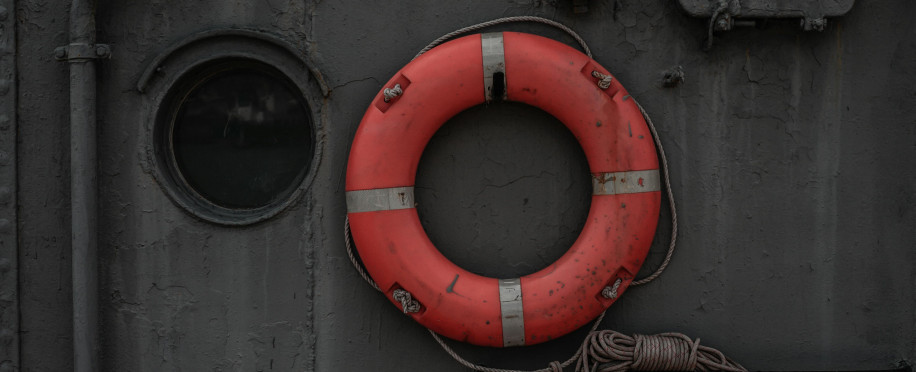Copyright © 2025 lmitac.com All Rights Reserved. Contact - Terms and Conditions - Privacy Policy - Quality Policy - Become an instructor - Vacancies - Sitemap
London Maritime Academy is a trade name for London Premier Groupversion: 2.9.0
London Maritime Academy is a trade name for London Premier Group

Posted on : 5/26/2024, 9:35:15 PM
Ever boarded a ship and noticed a particular line drawn on the body of the ship?
This seemingly insignificant line is called the Plimsoll Line. It’s much more than a line though! It’s an important indicator of how safely a ship will go off into the sea. How does do that?
Read along to learn more about the history of the Plimsoll Line and how a single line has been saving lives for years and years.
The Plimsoll Line is named after Samuel Plimsoll, a British politician and adamant social reformer in the 19th century. Around 1860, Plimsoll became infatuated with the amount of ships lost because they were loaded with too much cargo.
When he looked deeper into this, he realized it was because greedy ship owners wanted to make as much money as possible and were willing to risk the lives of their sailors and ships.
Being the social advocate he is, Plimsoll fought to create a legal maximum capacity for ships.
Finally, in 1876, after years of rigor, the concept of the Plimsoll Line was implemented through the Merchant Shipping Act.
This Act mandated all ships to be marked with a visible mark along the side of the hull to reference the maximum depth (draft) the vessel may have under the waterline. Was this line only a sign of victory, however? Absolutely not!
The Plimsoll Line, aka the International Load Line, is an essential safety measurement that has saved millions of lives from shipwrecks. The Plimsoll Line is an internationally standard marking of loading limit located on a ship’s surface.
This painted line ensures that the ship is not overloaded meaning it will stay afloat and won't become unstable to the point of capsizing.
Let’s consider a ship with too much load and no Plimsoll Line, the pilot and crew would not be able to determine how fully their ship could safely sail properly and the ship would end up immersed in the water and all would be lost.
Nevertheless, with the Plimsoll Line in place, the captain can immediately see when the water line touches the Plimsoll lines: then he knows that the maximum load is reached based on the markings. The captain then decides on the cargo amount the ship should carry to avoid any accident.
Was the plimsoll line a feature of the past? It most certainly wasn't! Here are a few examples of how it's used in today's life:
Modern technology has made it easier to monitor and enforce the Plimsoll Line. Today’s vessels are fitted with data analytic systems that collect and display data on load conditions so that loading and operations stay within the safe limit.
The use of the Plimsoll Line is highlighted in Maritime safety courses online. People who drive forklifts are trained on the importance of this safety measure and can recognize when to follow the load limits as indicated by the line. This knowledge is necessary for ensuring safety and for preventing maritime accidents.
Maritime authorities across the world inspect ships to check whether they adhere to load line rules. Non-compliant vessels receive fines and may be declared unfit for sailing until they meet safety requirements.
The plimsoll line marks the safety of ships at sea, however, it's a lot more than that. Here's a collection of fun facts about the Plimsoll line for you to learn and enjoy:
The Plimsoll Line is drawn on the side of the ship and looks similar to eye test horizontal lines and letters. Each of the four markings represents a number of loading conditions, including freshwater, saltwater, tropical freshwater, and winter North Atlantic. These variations help ships remain protected from different conditions that may be encountered.

The Plimsoll Line is a reference line engraved in the side of a ship which indicates the level of safety of the ship. This international code helps implement safety measures on ships from different countries by standardizing the minimum safety requirements for ships. This has helped in achieving uniformity for global maritime safety and achieve IMO’s new environmental vision.
The phrase ‘Plimsoll Line’ is no longer only in academic literature. For example, it was introduced in Herman Melville’s 19th-century nautical novel, Moby-Dick . This allusion demonstrates the popularity and significance of the Plimsoll Line as part of the maritime narrative.
The Plimsoll Line has to be adjusted for different shipping seasons. The weight of cargo that ships can carry varies depending on the time of the year and whether they are navigating freshwater or saltwater. For instance, in summer. the load line marking is higher than the winter load line marking because the sea waves are heavier during the winter.
The Plimsoll Line became not only a legal tool in the history of maritime but also a practical instrument in regulating merchant ships. This safety measure was made compulsory by the Merchant Shipping Act of 1876 and is one of the earliest pieces of legislation designed to protect the lives and working conditions of those employed on commercial vessels.
The Plimsoll Line is a special part of maritime education and training. It is taught to aspiring sailors and maritime professionals and is important for understanding how to keep a ship from losing its stability and prevent dangerous accidents at sea.
As you can see, the plimsoll line is a very insightful tool for any ship's fright and passenger security. if you want to keep your ships floating through seawater, the answer is always a plimsoll line.